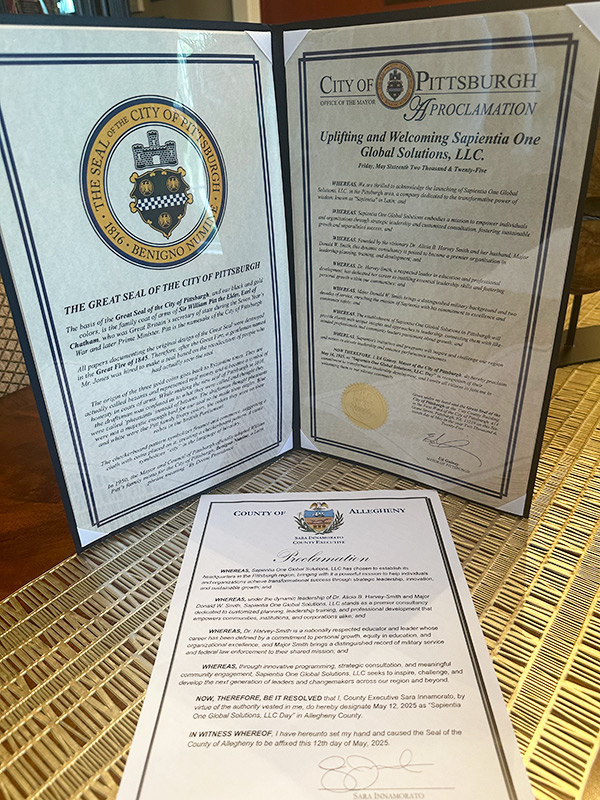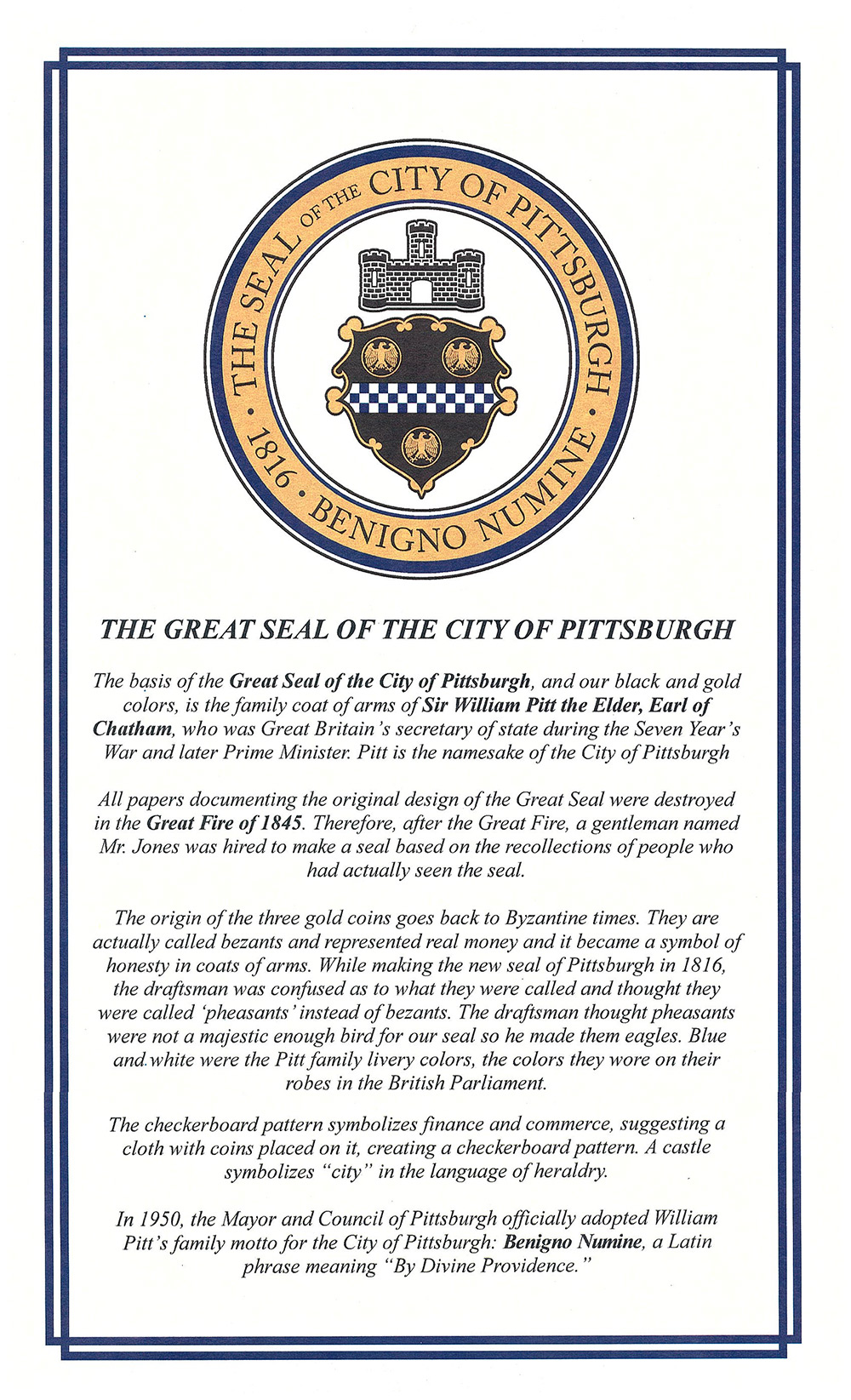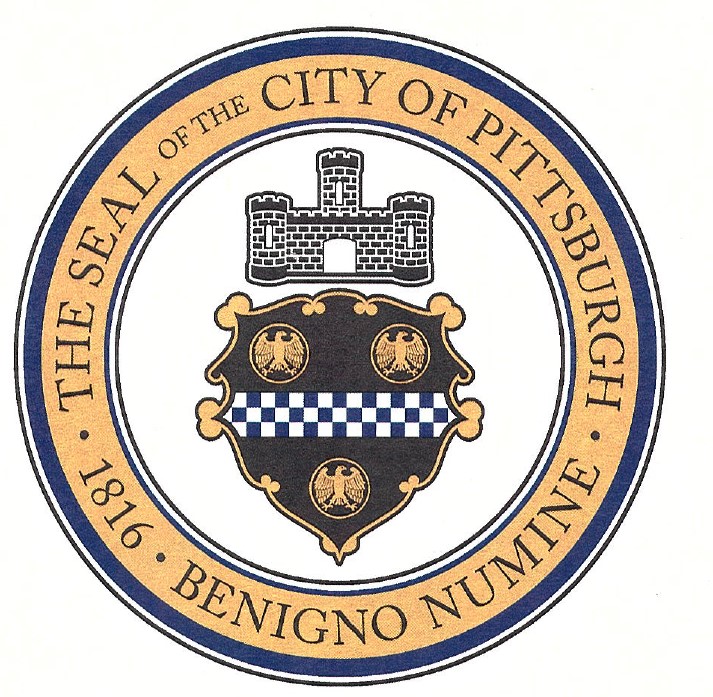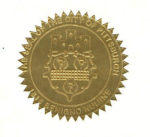AWARDS
The Great Seal of the City of Pittsburgh
The Great Seal of the City of Pittsburgh
The basis of the Great Seal of the City of Pittsburgh, and our black and gold colors, is the family coat of arms of Sir William Pitt the Elder, Earl of Chatham, who was Great Britain’s secretary of state during the Seven Year’s War and later Prime Minister. Pitt is the namesake of the City of Pittsburgh.
All papers documenting the original design of the Great Seal were destroyed in the Great Fire of 1845. Therefore, after the Great Fire, a gentleman named Mr. Jones was hired to make a seal based on the recollections of people who had actually seen the seal.
The origin of the three gold coins goes back to Byzantine times. They are actually called bezants and represented real money and it became a symbol of honesty in coats of arms. While making the new seal of Pittsburgh in 1816, the draftsman was confused as to what they were called and thought they were called ‘pheasants ‘instead of bezants. The draftsman thought pheasants were not a majestic enough bird for our seal so he made them eagles. Blue and white were the Pitt family livery colors, the colors they wore on their robes in the British Parliament.
The checkerboard pattern symbolizes finance and commerce, suggesting a cloth with coins placed on it, creating a checkerboard pattern. A castle symbolizes “city” in the language of heraldry.
In 1950, the Mayor and Council of Pittsburgh officially adopted William Pitt’s family motto for the City of Pittsburgh: Benigno Numine, a Latin phrase meaning “By Divine Providence. “










